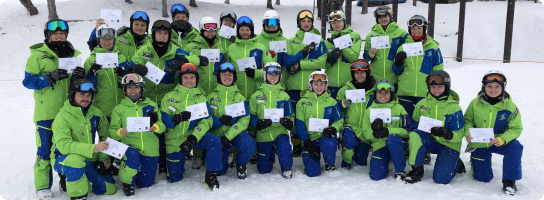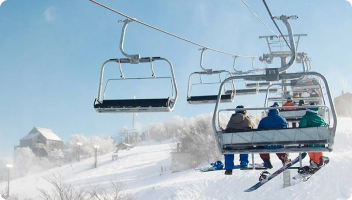Backcountry skiing and snowboarding in Australia
Backcountry scene and vibe
Backcountry skiing in Australia is starting to become much more popular. It’s still a niche sport for the moment, but with every passing season, more and more people are getting sick of the crowds on the mountains, and heading into the backcountry to check out some of the great terrain not accessible to those in the resort.
Rental shops are now starting to stock backcountry gear, in particular in Canberra, Cooma and Jindabyne for the NSW Snowy Mountains.
There are now tour guides offering guided tours, and you will likely encounter a few others on some of the more popular routes.
When to go
Generally, the backcountry season kicks off once the resort season is already in full swing. The resorts will open in late June, usually with patchy snow, and hit their stride in August. August is therefore when the natural snow base has built up enough to be good out the back.
The great thing about backcountry, of course, is that once the resorts close in late September, the backcountry season keeps on going. You can get snow to ski on all the way into December up in the NSW Snowy Mountains, and a touch before that in Victoria.
Backcountry locations
New South Wales
The Snowy Mountains are just about the best place in the country for backcountry skiing. Once you get out into the back, you realise just how much cool terrain Australia has for skiing that is not accessible via the resorts. Here are a few little snippets to get you inspired – the Aussie Alps as you’ve never seen them
https://www.youtube.com/watch?v=ompTHReNwIk
https://www.youtube.com/watch?v=EmKjrThccYk
There are a number of options for both day trips and longer, overnight trips.
Guthega and surrounds
For day trips, a very popular starting point is the Guthega car park out the back of Perisher. To get there, you take the road up towards Perisher, but instead peel off towards Guthega on the way up.
From the car park, groups head over the Guthega pondage dam wall and out into the terrain beyond.
Peaks accessible in a day include Mt Tate, and Gills Knobs. There is some great tree skiing to be found on the other side of the Mt Tate valley too. The Mount Anderson bowl area is also accessible if you are pushing it quite hard for a day.
For longer, overnight trips, you might consider heading out to Watsons Crags. These chutes are about the steepest terrain in Australia, and are pretty hardcore riding. You definitely want to be sure of avalanche conditions before heading out there. However, the rewards are excellent for those with the skill and patience.
Mount Twynam is another popular mountain to hit up for overnight trips. It is around 5km as the crow flies from the Guthega car park. It becomes more accessible once the Charlotte Pass area opens up in October.
Kosziusko Chair at Thredbo
Another very popular spot for backcountry is out the back of Thredbo, taking the Kosziusko Chair. Thredbo keeps this chair open after the season has closed, with single lift tickets around $39, including a ride down. It is a very popular area for both backcountry skiing as well as cross-country skiing.
From the top, you can skin across towards the Rams Head area. There are three peaks, South Rams Head (which is too rocky for most to ski), Rams Head and Rams Head North.
There is some beautiful terrain around here, nothing too crazy, but some nice long runs and a great introductory point for Australian backcountry.
From the Rams Head area, if you are going out overnight, you can swing around the back to access the Leather Barrel area – which has some really nice chute terrain.
You can see Mt Kosziusko in the distance from the Rams Heads. It is possible to get out to Kosziusko in a day, and back, taking the Kosziusko chair and then skinning straight across. There are some good, shortish runs around that area.
Dead Horse Gap and surrounds
Further up the road from Thredbo, you arrive at a spur known as Dead Horse Gap – so named because of the brumbies that would get stuck up here.
From here, you can boot-pack or skin up the spur, which takes you up to the Rams Head area. This is a beautiful little area for overnight trips as there are some accessible creeks up the spur, as well as some protected areas with trees.
Charlotte Pass
From around October, the road up to Charlotte Pass generally opens back up for regular car traffic. During the season, the only way up is to take the oversnow bus from Perisher. It becomes much more convenient to launch your trips from Charlotte Pass once the road is open.
From the Charlotte Pass car park, you can access a bunch of great terrain, either for day trips or overnight. Really good terrain in the area includes around the Blue Lake, and the Mt Twynam/Little Twynam area. It is quite steep around this area.
A great overnight route is around the Mt Townsend area, where again you will find quite steep terrain.
Victoria
There is some really nice backcountry around Mt Hotham and Mt Feathertop as well as Falls Creek.
Mt Feathertop
Mt Feathertop and the Razorback would have to be some of the best backcountry riding in the country. There is some really excellent terrain around this area, including some very steep slopes where you need to be on your game. It’s quite steep, and can be pretty ragged.
The Razorback is a 10km ridgeline that juts out from the road on the way up to Mt Hotham, starting from Diamantina Hut. There is generally some nice touring to be found going along the ridge and diving down off the side. You can head out for the day, or push it further for overnight trips.
Harrietville, at the base of the mountain, has a campground if you don’t want to stay overnight in the snow.
Mt Feathertop is quite a trek out at around 11km, so is generally an overnight trip camping in the snow. There is some really nice terrain here, including some quite steep terrain, particularly in Avalanche Gully. Be careful out here, as the name suggests. The east face usually forms a long cornice along the leeward side, as the wind blows the snow across from the windward side facing west.
Great Alpine Road
The Great Alpine Road is the road that goes up to Mt Hotham from Harrietville at the base. There are actually lots of great places just off the side of the road to go exploring for a bit of day touring.
Bogong High Plains
From Falls Creek, there is actually a company that does snowmobile backcountry tours. You can get around Mt McKay, which has some nice, steep terrain for these tours. There are also gentle options. Steve Lee is the operator.
From Falls Creek, you can also head out around the dam towards the high plains. The terrain around here is generally flat and open, so a good place for people new to backcountry.
Mt Bogong, the highest mountain in Victoria, is also accessible using Falls as a base.
Snow and Weather Conditions for Australian Backcountry
The great thing about the Australian backcountry is you can have some genuinely soft, powdery days on untouched lines. When the snow is deep, it’s an awesome day out the back, but even when it’s not, the weather is often not too cold once you get to September, so you can skin around in a t-shirt (necessary in fact given how hot you will get). It is rare that temperatures dip below -10c. Make sure to carry emergency equipment in case you get stuck up there though, goes without saying.
Avalanches
Australian backcountry is a really good place to learn the ropes and start to learn the skills you need to know. Avalanches are relatively rare in Australia. The snow pack is generally more stable than overseas. The snow is a bit wetter than overseas, which also helps layers to bind, and the warmer temperatures also assist the layer consolidation process. A lot of the good terrain is less than a 30 degree incline (avalanches most often occur between 30-45 degrees). Dumps are also not as big as overseas.
However, that is not to say they don’t occur. They certainly still can, particularly in the steeper areas, and you should always be taking the necessary precautions and carrying the appropriate gear. Backcountry can be dangerous wherever you are, and unpredictable – there have been fatal avalanches in Australia. It is a good idea to get a guide to learn the area and to learn how to use the gear. End of the season can sometimes pose a bit more of a risk when the entire snowpack warms.
http://mountainsportscollective.org/ run a backcountry advisory service which has information related to snow pack stability and avalanche risk.
Availability of reports and rescue options
It is always advisable to carry a Personal Locator Beacon – sometimes referred to as an EPIRB (Emergency Positioning Indicating Radio Beacon). This will send out a signal that can be detected by a satellite, and then beamed to the nearest emergency rescue crews. Bear in mind that this can take several hours, and they won’t be able to come if it’s already dark or the weather too inclement. This is far too long if you or your crew are caught in an avalanche, so you need to know what to do in case you need to perform a rescue. EPIRB would more likely assist in case of a broken leg, or if you are lost, for example.
The Australian Maritime Safety Authority has information on EPIRBS. http://beacons.amsa.gov.au/about/beacon-types.asp
In many parts of the ranges, you can get phone signal. It’s therefore advisable to take a phone with you, but not necessarily have it as your only option. Signal often drops out at the bottom of gullies and valleys, but can be surprisingly good at the top of mountains. Australia’s emergency number is 000.
The Emergency Plus app was launched by the Australian Government a few years back. It establishes your location through GPS, and shows your position on a map. It provides links to Triple Zero, state emergency services and police. You, of course, need signal for it to work.
Check out Backcountry Gear for further information on the necessary gear to head out into the Australian backcountry.
Rental Gear
A few places that rent skis with touring bindings attached as well as skins and adjustable poles include Rhythm Snowsports in Cooma, Straightline in Fyshwick, Canberra and Wilderness in Jindabyne. You might also be able to find touring boots, though you can of course just use your own alpine boots (walk mode just helps to reduce blisters).
Some also rent out bags, shovels and probes, though they transceivers are a little harder to come by for rentals in Australia. You can rent locator beacons from a number of outdoors shops as well, given these are not specific for winter touring.
Happy touring!


